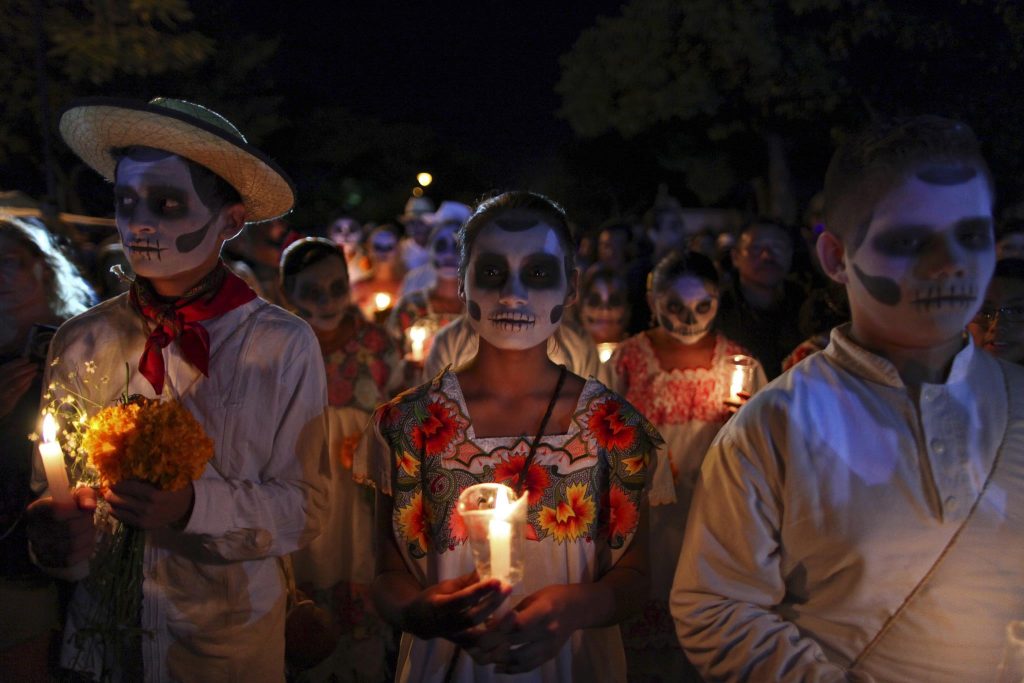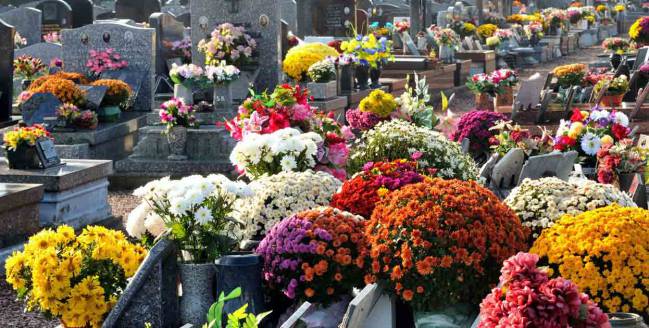
All Saints’ Day
Many people commemorate the deceased on the 1st and 2nd of November, even though we may not know the reasons for choosing those dates, known as All Saints’ Day, just before the Day of the Dead, which is traditionally referred to as “Dia de Muertos.”
All Saints’ Day was established by the Catholic Church in the early 4th century due to the Great Persecution of Diocletian. It was the final and bloodiest persecution against Christians in the Roman Empire, marked by a series of edicts that abolished the legal rights of Christians and demanded that they adhere to traditional religious practices.
Because there were so many martyrs persecuted by the Roman authorities, the Church decided to designate a day in their honor. In its early years, there was no fixed date for this observance, but it was Pope Gregory III (731-741) who decided to set it on November 1st and built a chapel in the Basilica of St. Peter. Since the year 840, Pope Gregory IV extended the celebration to the entire Church in the 9th century. The Eastern Orthodox Church celebrates this day on the first Sunday after Pentecost. This celebration in the West was instituted in honor of all saints in Catholic devotion, as well as to pray for all known and deceased loved ones.
On this day, the Church celebrates a solemn feast for all the departed who, having passed through purgatory, have been completely sanctified, having obtained the beatific vision, and now enjoy eternal life in the presence of God. Hence, it is the day of “All Saints.” It is not only celebrated in honor of the blessed or saints on the canonized list for whom the Church holds special days throughout the year, but it is also celebrated in honor of all who are not canonized but already live in the presence of God. It is common for major cathedrals to display the relics of the saints on this day.

All Saints’ Day in England
In England, this evening vigil was called “All Hallows event” on the night of the previous day, October 31, which gradually transformed into the pronunciation of Halloween. However, this Anglo-Saxon tradition has more roots in Celtic traditions that Irish and English immigrants spread to the United States and other English-speaking countries.
All Saints’ Day in other countries
Nevertheless, this celebration has adapted to the regions of the countries it reaches. For example, in Manila, Philippines, people light candles at the graves of hundreds of unknown soldiers. In Poland, some people leave candles and offerings at the grave of Lieutenant Ryszard Kuklinski, a CIA informant who provided information on the Warsaw Pact, a 1955 military cooperation agreement signed by Eastern Bloc countries to counter the political threat of NATO and the rearmament of West Germany. But in general, Polish people visit graves of the deceased, light the candles and decorate graves with chrysanthemums.

In Valencia, Spain, people often place lit candles on the sand cemetery, a temporary arrangement for those who are far from the graves of their loved ones and wish to symbolically visit them. In Cartagena de Indias, Colombia, they celebrate “tintililillo,” where a group of children goes from house to house singing for food to prepare a traditional dish called Sancocho.
How it is celebrated in Mexico?
In Mexico, this celebration combines with a pre-Hispanic tradition unrelated to All Saints’ Day, and every November 2, like in other Central American countries, they celebrate the Day of the Dead. People leave a trail of marigold flowers to help the spirits of their departed family members find their way home, where they discover an offering with food, sweets, and beverages the deceased enjoyed in life.
Regarding the celebration in Mexico, due to the influence of other countries that observe this holiday as a festive occasion, this date was established from the top of the Catholic Church hierarchy. Mexico is perhaps the country with the most folklore during this celebration, as it is an integral part of the Day of the Dead, a day of satire, ritual, homage, and celebration of death and the deceased.
In the days leading up to November 1st, various rituals are performed to honor the deceased. It is common to see people in the streets wearing colorful costumes such as mariachi outfits, indigenous dresses, and costumes of skulls.
